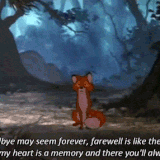

Then-boyfriend, and musical sounding board, Del Palmer programmed a Linn Drum pattern, to which Bush wrote with a Fairlight cello. With this new approach, one evening in 1983, Hounds Of Love's first song was written. She also began working straight from the initial demo, meaning the finished master retained that initial inspirational spark no matter how overdubbed and refined it became. Now the character of its sounds, happy or sad, would be the seed from which a song grew (she cited Brian Eno as one of her favourite synth players during interviews). The Fairlight became her primary compositional tool (along with the rhythmic foundation of a drum machine). The contrast between this portal to the past setting, and this new fangled gadgetry, mirrored the unique alchemy of the first album she'd make there, Hounds Of Love.Īway from the cloistered city, new songs drew inspiration from nature ("watching the elements do their stuff") as well as cinema ( The Cruel Sea, Don't Look Now), paintings (Breughel was a fave) and books she'd bought in the '70s (Peter Reich's A Book Of Dreams for 'Cloudbusting'). It boasted two 24-track Studer tape machines, linked up to make 48, a Soundcraft mixing desk (eventually replaced by SSL), as well as Fairlight and Emulator samplers, Quantec digital room simulators, and her favourite Neumann mics.

If East Wickham Farm, parts of which dated back to the 14th century, seemed like a stepping stone back to an old England, Bush's studio approached the state of the art. (The barns had already been used as a rehearsal space for her KT Bush Band since the late '70s.) Now, with the help of her father, she constructed a studio in the barns she'd once daydreamed in, playing an organ with its pedals eaten away by mice.
#Hounds of love sex scene skin#
She'd stretched out on the lion skin rugs and watched the late night BBC2 Saturday movie, read from the bookshelf and heard her brother John Carder recite poetry, while younger brother Paddy played folk on his arcane musical instruments.

She'd sat and written songs there, on a piano given to her father by a professor named Aesop. This was the place that had nurtured her creativity, where childhood's spontaneous imagination had blossomed into adult genius. Situated right at the edge of suburbia, East Wickham Farm's hedges divided Welling's London overspill and country fields. She also got back into dance, training with an American instructor, Dyan Gray, excitedly telling fans in newsletters that 1983 felt just like the pre-fame 1976 when she would dance by day, compose by night.Ĭrucially, weary of the "creativity-zapping cost" of recording in conventional studios, she built her own, in the neighbouring buildings of her parents' Kent home, East Wickham Farm. She saw friends, watched films, learnt to drive (buying a VW Polo) and cooked meals. In her absence, rumour-mongers created a fictional Bush the Lady Lucan, the Greta Garbo of pop. She left London where "you can't really breathe", moving in to a 17th century farmhouse in Sevenoaks, Kent. Rarely off a stage or out of a studio since 'Wuthering Heights', she sought "stimulus for a new direction". The only place she could be regularly seen that year was on the walls of Baldwin's Casuals, in Weatherfield, looking out from a poster of The Dreaming's cover, at Elsie Tanner and Vera Duckworth's daily tribulations on Coronation Street.ĭiagnosed with nervous exhaustion by her GP father, she retreated from the media glare of the pop scene, later calling it "bitchy". By 1983, Bush sightings were scarce – in a field recreating A Broken Frame's cover with its photographer Brian Griffin promoting The Single File 1978-1983, which would be released early the following year. In November, the single 'There Goes A Tenner' failed to chart – yet tucked away on its flip side, coded in French, 'Ne t'enfuis Pas' hinted at things to come 'amour fou', consistent beats and a searing immediacy.
#Hounds of love sex scene full#
But with it came a lot of, in her words, "unfavourable attention" alienated from the singles market, the corridors of EMI were full of bemused chatter about the now grown up 'company's daughter'. She received deserved critical acclaim from some quarters, and the album hit No.3 in the UK charts. But this masterpiece of wild ambition and fraught emotions had come at several costs.Įndless experimentation and studio-hopping across London had been expensive becoming the sole producer, just as her music was getting more complex, had been exhausting. She'd sailed to new creative heights on the ten strange, beautiful songs that make up the record seized control as producer, delving deeper into sonic details and characters, from a bank robber to Mrs. "She's really done it now – she's gone completely mad." That's how Kate Bush later assessed the reaction to her fourth album, The Dreaming, upon its September 1982 release.


 0 kommentar(er)
0 kommentar(er)
